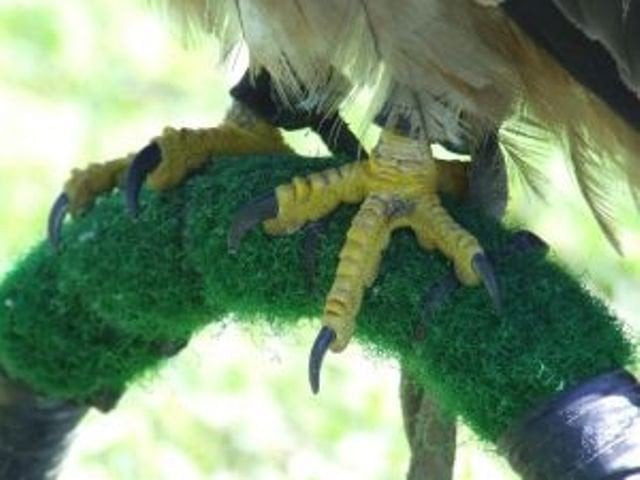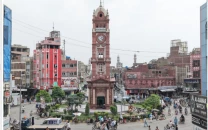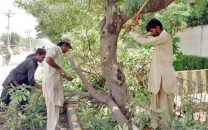Whither our feathered friends? Concrete jungle pushing out Lahore’s birds
The Wildlife Department is never consulted on urban development project, DG says

The Wildlife Department is never consulted on urban development project, DG says. PHOTO: FILE
Khan, director of biodiversity at the WWF, says the last survey of the ecosystem was conducted when the government cut trees along the Lahore Canal to widen the road. “The ecosystem changes with increasing urbanisation and yet there has been no assessment of bird migration in the city.”
The old endemic trees of the city’s gardens, once a popular haunt of fruit bats and several resident bird species and many summer, winter and transit migrants, are now limited to a few sites including Lawrence Garden and the Punjab University’s New Campus, she says.
On the other hand, the population of scavenger birds, including mynahs, crows and kites, is on the rise. The birds live off human waste and sometimes feed on the young of smaller birds. “This, too, creates an imbalance in the ecosystem.”
She says Lahore was once home to several species that feed on fruit – including the grey hornbill, green pigeons, woodpeckers, barbets and parakeets. “Now you can rarely spot them.” The Indian roller and kingfisher birds can be spotted in former agricultural, recently urbanised, areas, she says. “Piling on concrete in such areas cannot bode well for the birds.”
She says a lot of bird species cannot build nests the way scavengers can. “They need indigenous trees for nesting. Insectivore birds are affected by the rampant use of pesticides. “European bee-eaters (merops apiaster), prinia Indian robins and insectivorous bats are almost extinct in the city.”
Khan stresses the need for more rainwater reservoirs and green cover. “Every housing society should be required to dedicate a few acres of land for parks and trees.
Forestry, Wildlife & Fisheries Department Secretary Captain Jahanzeb Khan said the government was required to obtain a no objection certificate from the Environment Protection Department before starting an urban development project. However, the Wildlife Department is not asked to furnish ecological surveys or reports pertaining to the city’s wildlife, he says. “Cities are developed to serve people…why should input be sought from the Wildlife Department?”
Forests, Wildlife & Fisheries Department Director General Khalid Ayaz Khan disagrees. “The department has taken several steps for the protection of the ecosystem. The same conservation technique cannot be applied for all species of birds. We try our best to protect as many as species as we can.”
He says some species are preserved in-situ (onsite) and others are encouraged to mate (ex-situ preservation) in sanctuaries. He says the department has taken several steps to encourage breeding of birds in plantations where their natural habitat is emulated. “We have been breeding some species in Changa Manga, for example.”
“The government ideally should consult with the Wildlife Department…we stand for a major stakeholder.”
He says there has been almost no survey to check the state of the city’s ecosystem in view of urbanisation. “No department can work in isolation…people are not wildlife-friendly and the government does not priorities nature.”
According to a province-wide survey conducted by the Wildlife Department between 2010-14: 2,9748 birds were reported at the Dapher Plantation in 2010, the number had dropped to 23,854 in 2011. At the Kundian Plantation, 13,332 birds were reported in 2011. At the Chicha Watni Plantation, 4,616 birds were reported in 2011, the number had dropped to 3,285 in 2013. At the Pirowal Plantation, 4,625 were reported in 2011, the number had dropped to 1,294 in 2014. In Lahore’s Sundar Estate, 1,186 birds were reported in 2012; 14,450 at the Sargodha Air Base in 2012; 4,899 at the Shorkot Plantation in 2013; 3,127 at the Kamalia Plantation in 2013; 1,864 at Lal Suhanra National Park in 2014; and 1,833 at the Changa Manga Plantation in 2014.
Published in The Express Tribune, October 23rd, 2015.






1675249047-0/image-(18)1675249047-0-208x130.webp)












COMMENTS
Comments are moderated and generally will be posted if they are on-topic and not abusive.
For more information, please see our Comments FAQ